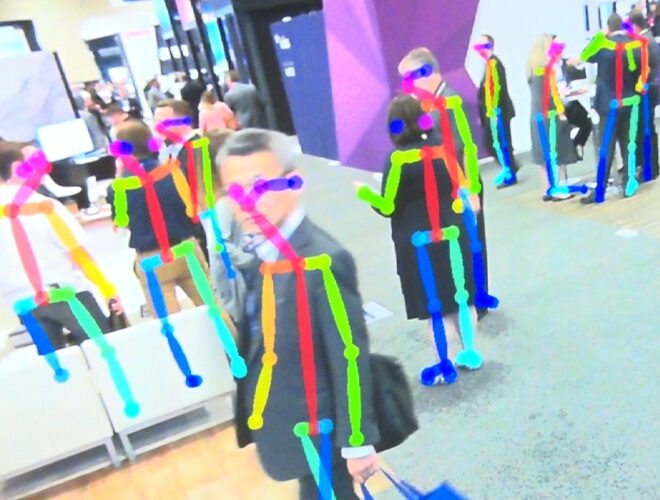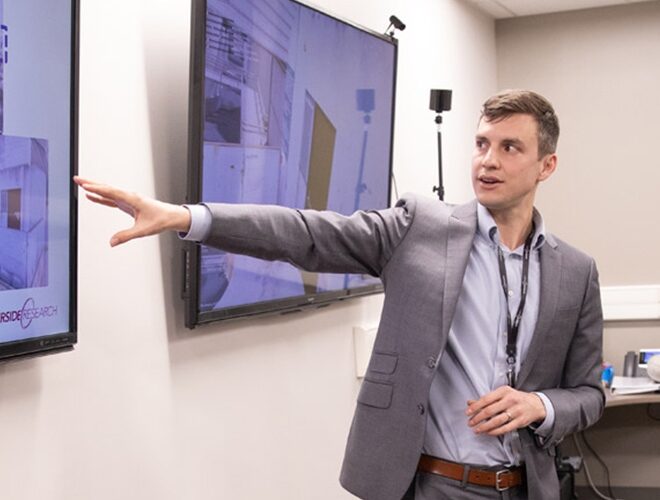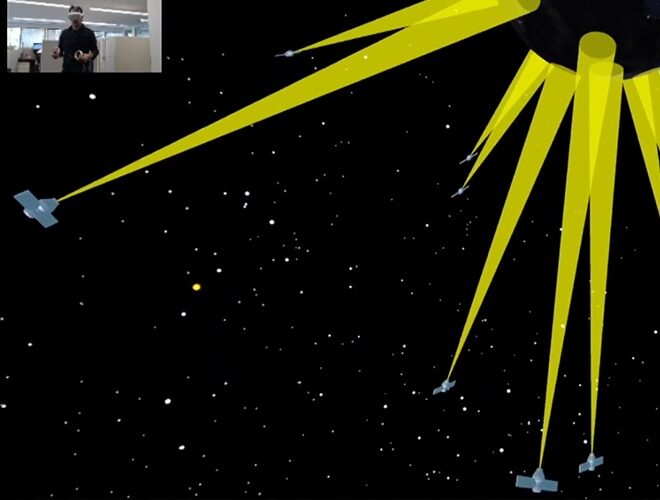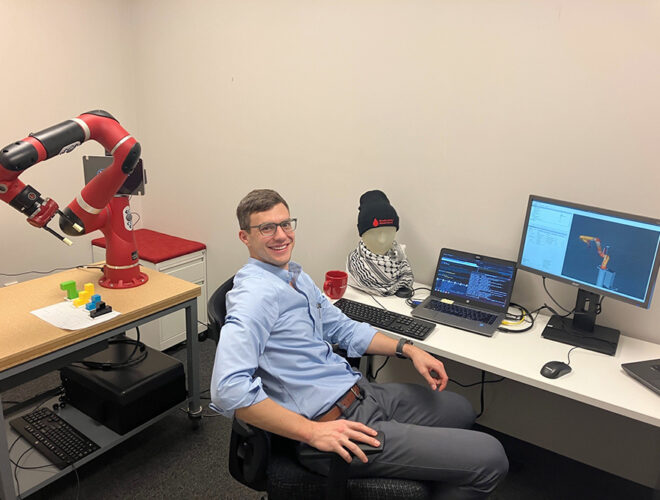Ready Anytime, Anywhere
The goal of Riverside Research Institute’s Artificial Intelligence and Machine Learning (AI/ML) lab is to put the best of teamed human and machine intelligence on tap for the warfighter, anytime and anywhere. Our lab works “at the edge” near the sensor with AI and ML solutions, back at the control station where military assets are being deployed and controlled, and in the rear echelon data lake or in space networks where analytics persistently mine information for insight. We help warfighters do their jobs more efficiently and effectively.

Keeping humanity in AI
To achieve this, we develop user-centered revolutionary technologies in:
- Object and activity identification using deep learning
- Faster accelerated artificial intelligence using neuromorphic computing for more brain-like computation
- Human-machine synergy using algorithms that are “human aware” so that adaptive teaming becomes possible.

Power of nonprofit in DoD space
Being a nonprofit organization gives Riverside Research a unique perspective and advantage in the AI/ML community. We tackle problems commercial entities are not motivated to address because the total market is not large or because they lack the security required to develop an integrated prototype. Our AI/ML expertise includes work with convolutional neural networks, deep learning, statistical learning approaches, integrated software and hardware solutions in novel neuromorphic form factors, virtual reality environment construction and integration, and in cognitive modeling and human factors engineering. These are combined with our deep knowledge of the Department of Defense’s problems and needs. That knowledge comes from decades-long first-hand experience – not only as an organizational mission partner – but from the hundreds of veterans we’ve employed over the years.

Seeing everything everywhere
Detecting, tracking, and classifying objects and activities at multiple scales and in multiple types of data using machine learning techniques is a core technology development area for our team. Riverside Research’s customers are interested in algorithms, which can accomplish change detection, object identification and activity classification in multiple phenomenologies, such as full-motion video, radio frequency data, radar and sonar. Core to mission success is our train-tune-test pipeline, which uses deep learning to train a model on a set of data, tune the model to the relevant features that unite classes in the data, and test the model on new data. We constantly improve our pipeline using the latest techniques including novel regularization, adversarial training, and rapid adaptation of proven architectures such as UNET or You-Only-Look-Once algorithms.
We are skilled at augmenting real data with synthetically generated data to fill out “big” data sets that are not ground-truthed or are missing features. We also advise customers on where the highest impact real data collect is to be found to improve performance. Finally, we offer complementary expertise in Bayesian and traditional statistical methods of analysis to get synergy.
When Every Second Counts
We help mission partners reduce the time it takes to conduct inference with our algorithms or to reduce the size, weight and power (SWaP) requirements of them. Reducing latency and SWaP while also producing more brain-like models so as to mimic the resilience and adaptability of the human brain is the focus of our Accelerated AI and ML portfolio. By using both software and hardware “neuromorphic” systems (yet-more-brain-like computing accomplished in software and hardware which isn’t built around the Von Neumann architecture), our Accelerated AI team produces prototypes which speak to edge computing needs where quick action is required.
Here at Riverside Research we’re building neuromorphic computing testbeds and integrated evaluation capabilities so our customers can use to steer their investments. This allows our mission partners to make rapid investment decisions shortening time to deployment. We have access to prototypes and special relationships with large and small businesses focused on neuromorphic computing, and software and hardware integration expertise.

More on human-machine synergy
Our human-machine synergy work ensures our algorithms accomplish their function by putting them into contact with the warfighter as early as possible. This accomplishes both important human factors (i.e., where should the bounding box be?) as well as gives our algorithms the ability to provide exactly what the warfighter needs and when by understanding their cognitive state (i.e., Is my human teammate task saturated? What critical piece of information do they need now?).
We develop and deploy effective solutions by focusing on bringing the right capacity of the warfighter and the algorithm together at the right time. This enables new forms of optimization (such as our Human-Aware Planning and Operations technologies) and truly adaptive teaming (where our algorithms can adjust what they do on the fly based on warfighter situational awareness, workload and cognitive state).

From virtual to reality
We use virtual and extended reality to put the human in the loop with prototypes of our algorithms early on to assess how use of our tools impacts joint performance. We use a “VR testbed” to accomplish warfighter-in-the-loop testing and prototype improvement. The testbed also includes physiologic and behavioral sensors, which can provide objective metrics of performance and provide leading indicators of efficacy so our systems can adapt and improve performance on the fly.
We also have several human-machine testbeds with embodied robots (Baxter, Sawyer, Furhat) to answer early questions about human-machine teaming (i.e., do AI facial expressions make a difference in how much soldiers trust the AI?). In addition, we use natural language processing to provide insight into the state of a human analyst and to rack-and-stack intelligence documents by priority content.
Please, join our team as an AI/ML leader, or work with us as partner, to help put the best of teamed human and machine intelligence on tap for national security, anytime and anywhere.
“Having the opportunity to watch our new Machine Learning team grow, being able to work alongside folks working on cutting-edge technology and being able to work on research I’m passionate about are the main reasons I enjoy coming to work every day.”
